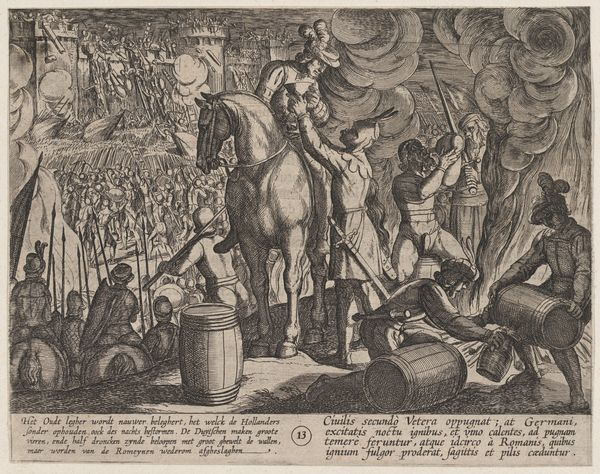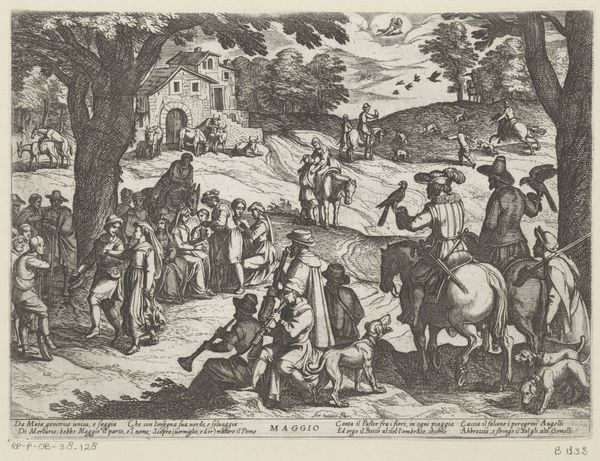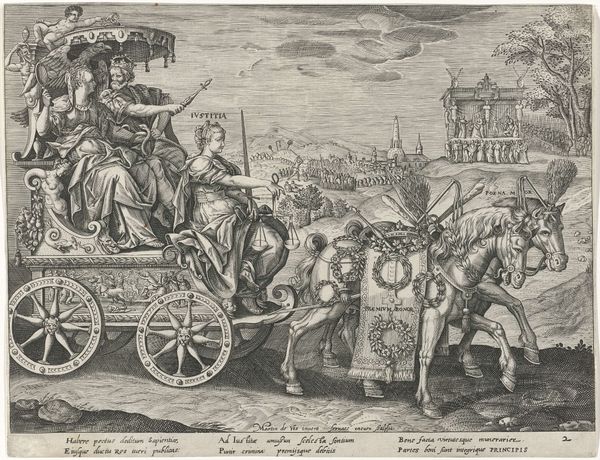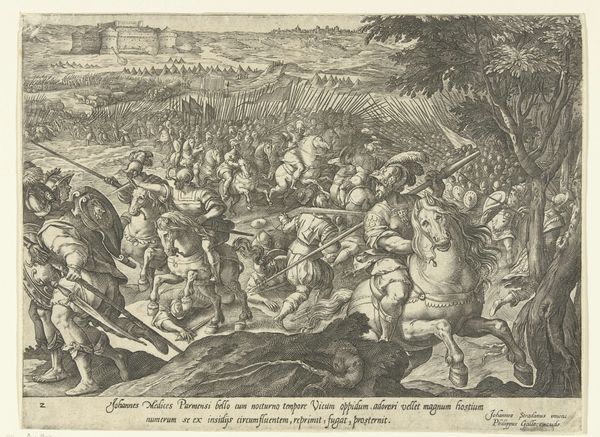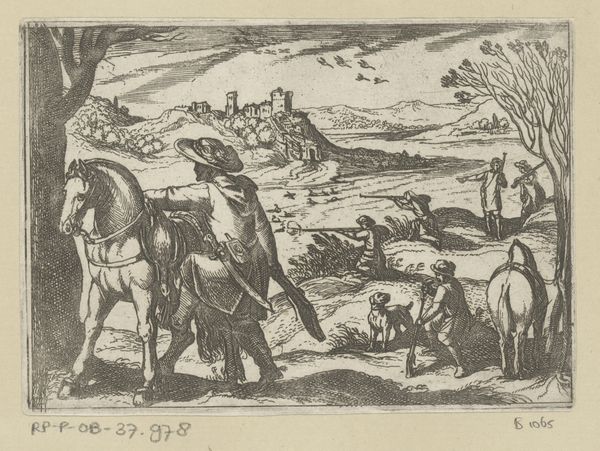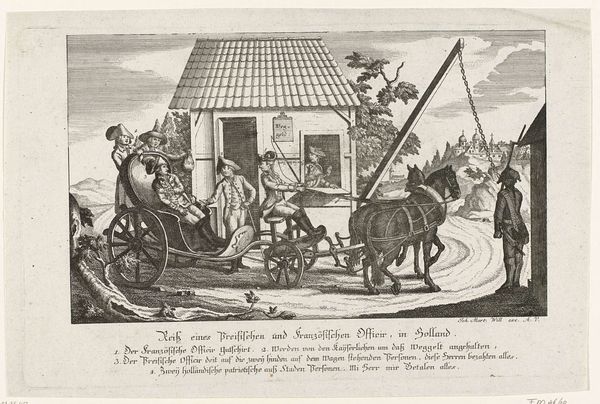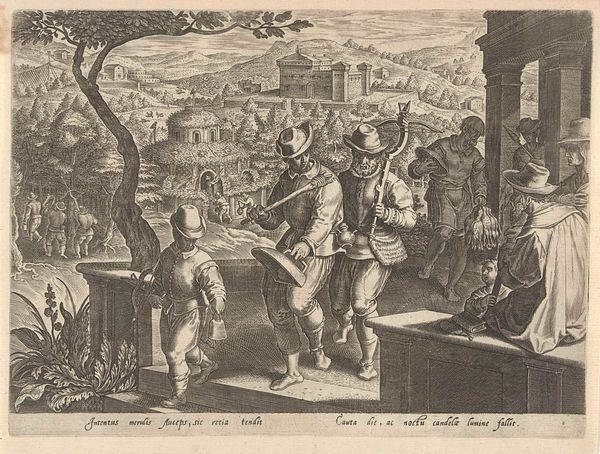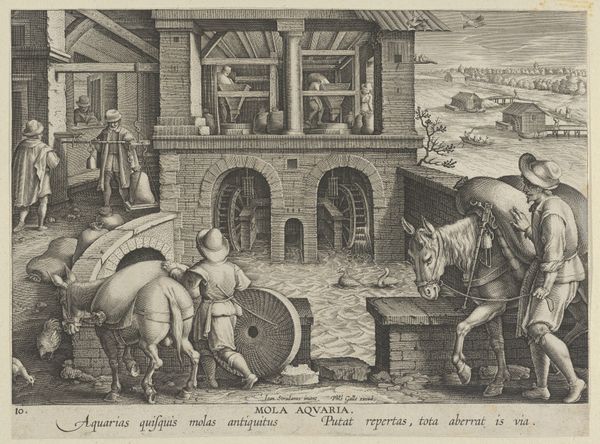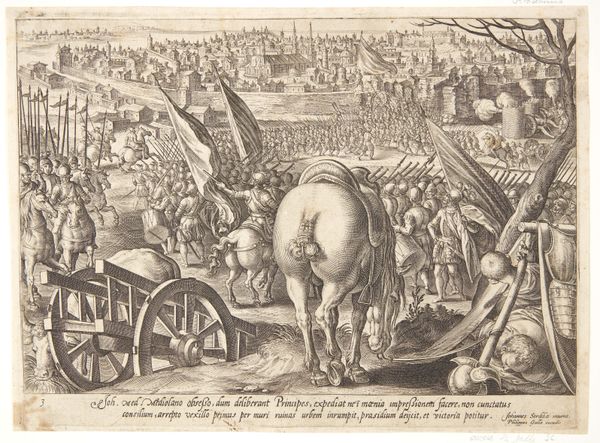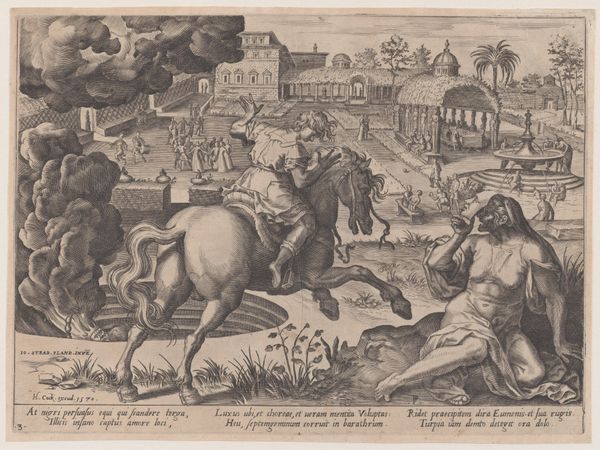
print, etching, engraving
#
dutch-golden-age
# print
#
etching
#
landscape
#
genre-painting
#
history-painting
#
engraving
Dimensions: height 198 mm, width 272 mm
Copyright: Rijks Museum: Open Domain
Philips Galle made this engraving called 'Windmolen' sometime before his death in 1612. It depicts a busy agricultural landscape, dominated by windmills which were then a cutting-edge technology. The latin text translates as: "The winged mill, which now wants to be driven by the winds, is said to have been unknown to the Romans". The image creates meaning through the contrast of old and new methods of production. People carry sacks, or travel by horse and cart, while in the background windmills harness the power of nature. Made in the Netherlands, this image reflects the increasing urbanisation and technological advancement of the time. The Netherlands' flat landscape made it ideal for windmills which became central to the Dutch economy in the 17th century, used to drain land, grind corn, and process various goods. As historians, we can look at this artwork and others like it to consider how technology shaped social and economic change. By using sources from the period, we might better understand the impact of windmills on Dutch society and culture.
Comments
No comments
Be the first to comment and join the conversation on the ultimate creative platform.
